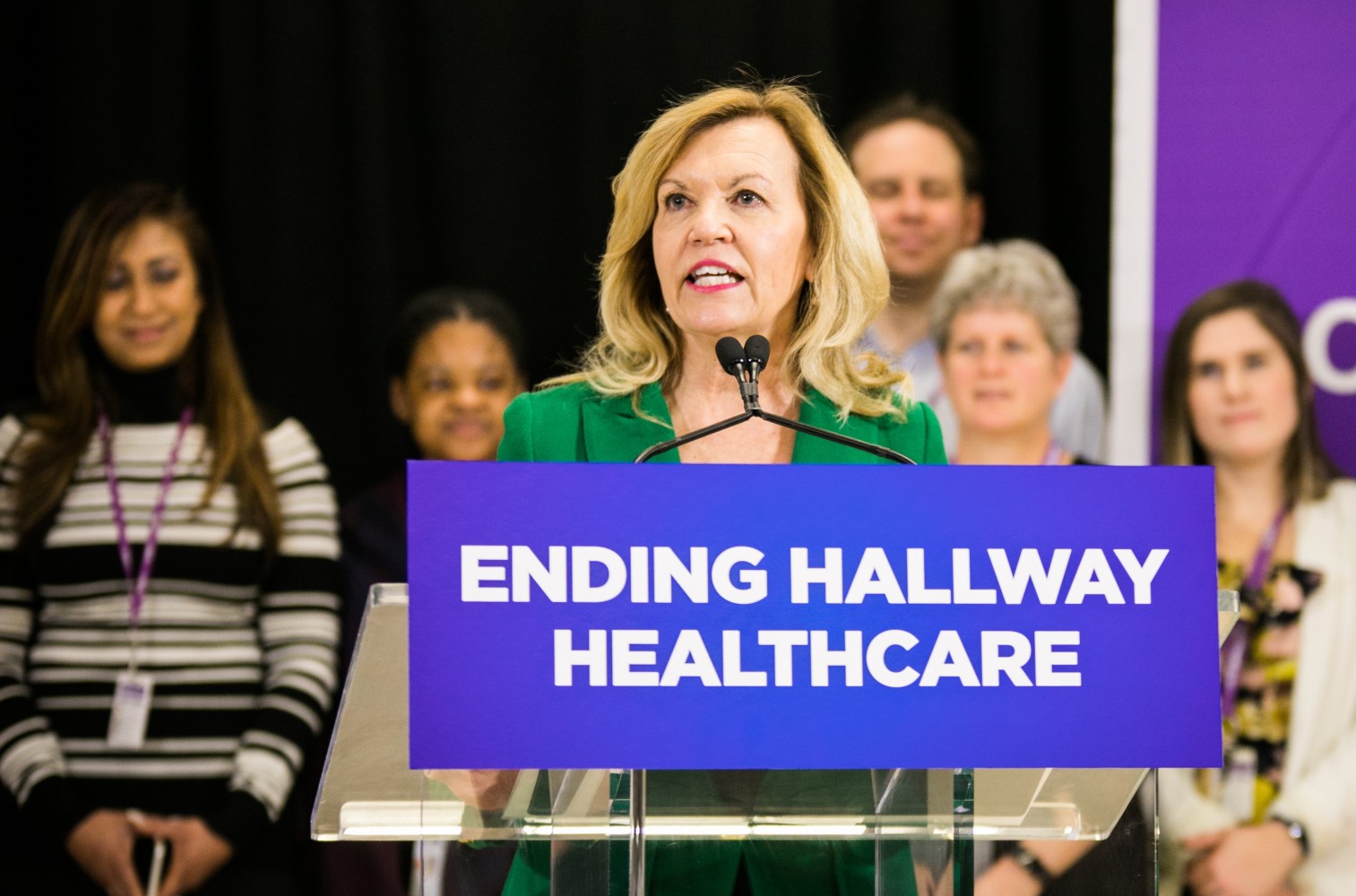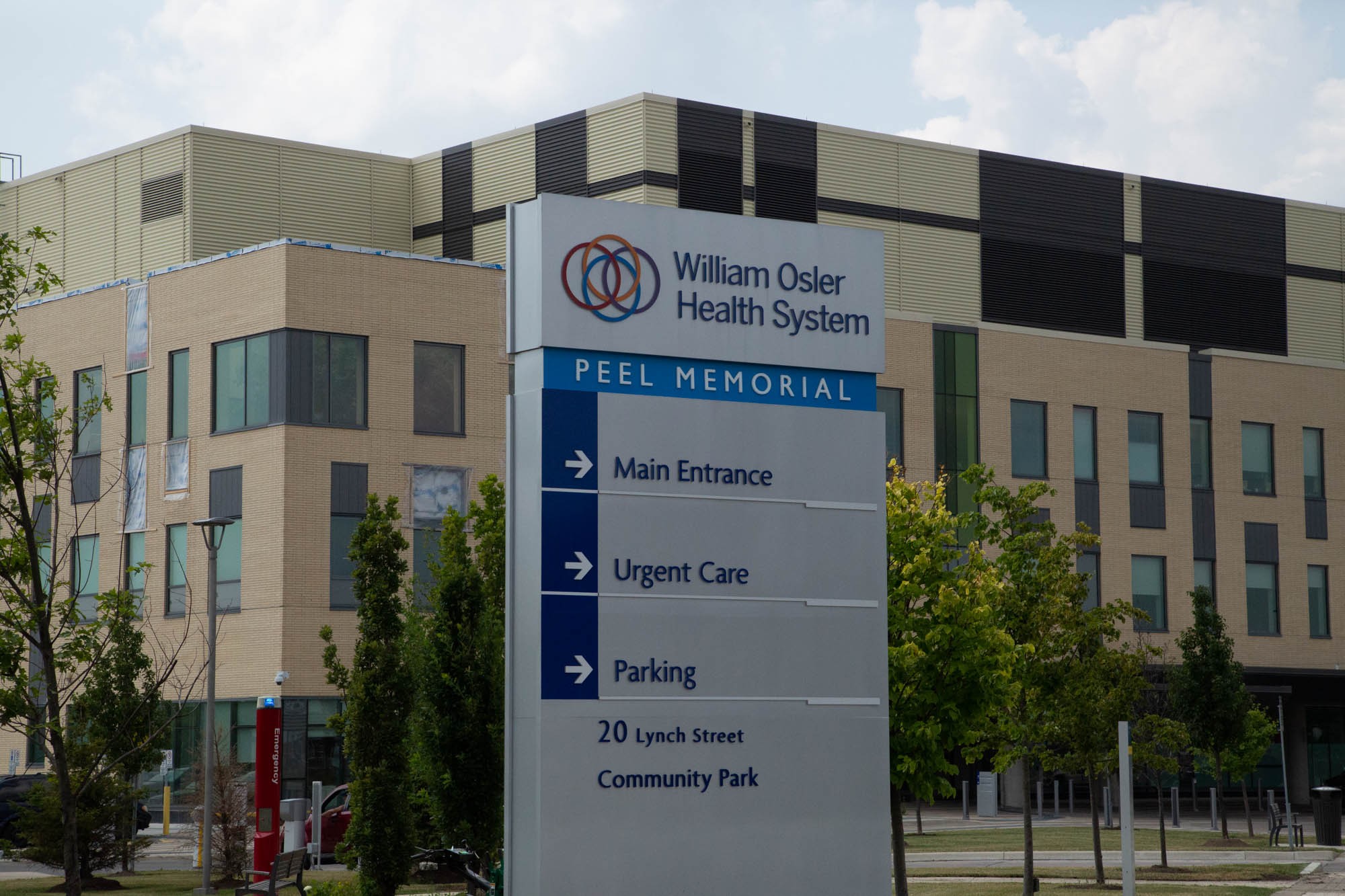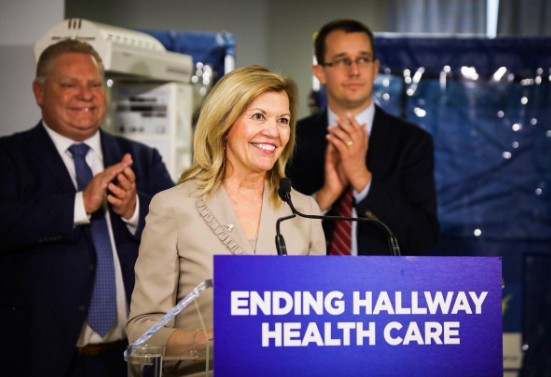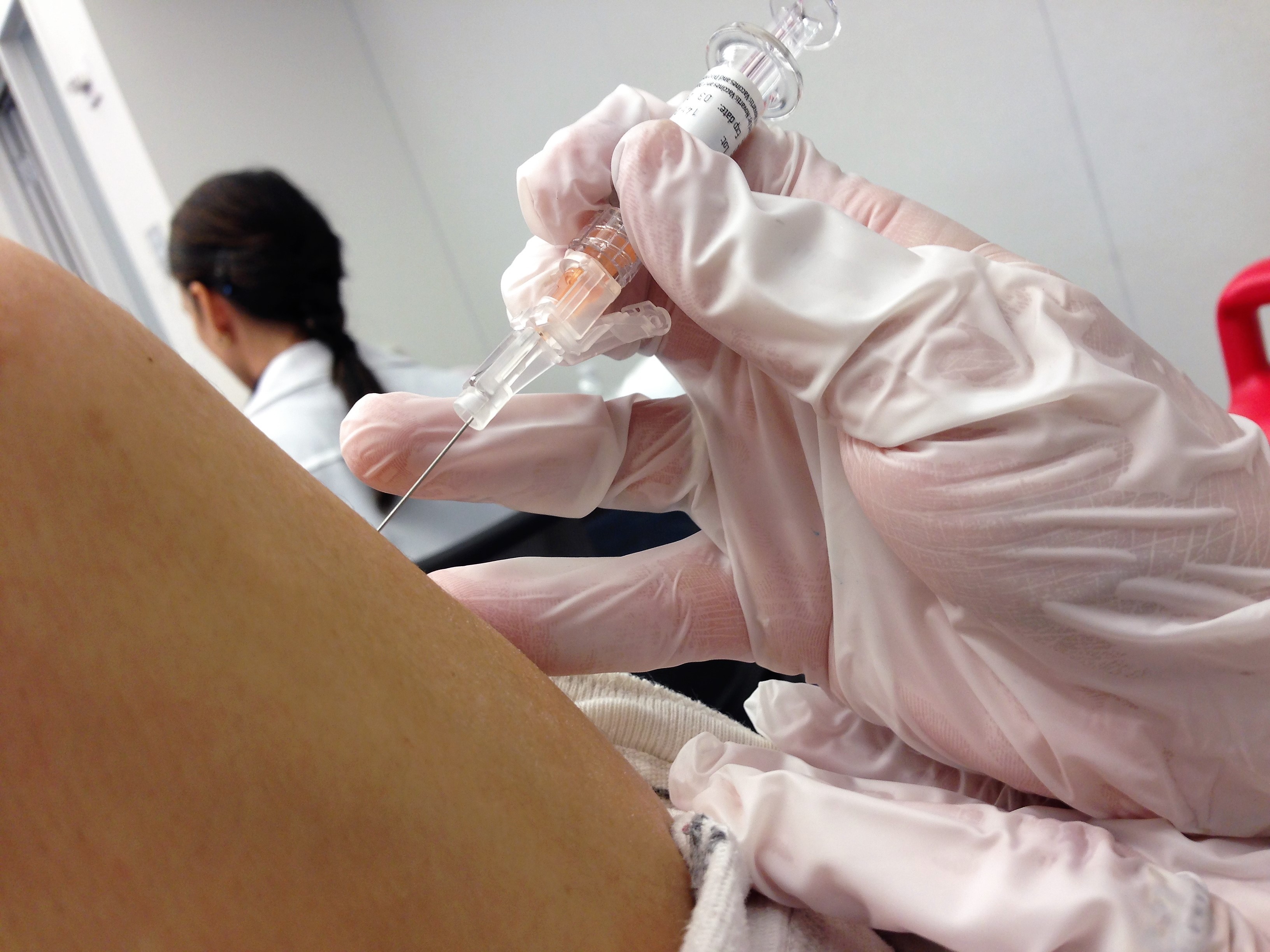
Healthcare system transforms, but Peel remains the worst funded region, receiving less than half the Ontario average
It’s a tumultuous time for Ontario’s healthcare sector.
Almost every level of the system is being morphed into a different form under the Doug Ford PC government, leaving those in need of care lost in a shifting labyrinth of hospitals, clinics and service providers.
The PCs appear to be following the mantra of ‘change is good’, and while the Region of Peel is subject to the same changes as the rest of the province, one thing has remained constant for the growing region: when it comes to healthcare dollars per capita, it continues to be the lowest funded in the province.
The Central West Local Health Integration Network (LHIN) which includes the City of Brampton, along with Caledon, Bolton, Dufferin County, parts of north Toronto, Malton and Woodbridge, is currently receiving approximately $973 of annual funding per capita, the lowest amount in Ontario, and $1,000 less than the provincial average.

This has significant trickle-down impacts as well, leaving specific priority areas with much less than what is needed to support needs.
For example, as more attention gets paid to the mental health and addictions centre with mental health issues increasingly sending patients to emergency departments, the Central West LHIN must deal with only $63 of annual per capita in funding for this area, while the rest of the province on average receives $102.
As part of the Ministry of Health’s 2019-20 transfer payments to the LHINs, a total of $29 billion for the 14 networks. The majority of this funding ($18.9 billion) is then allocated by the LHINs to hospitals, $5.9 billion goes to community programs, $4 billion for long-term care homes, and $2 billion for LHIN administration costs. Funding is based on a number of factors, including population, the number of people cared for and the services provided.
Now, with the process well underway to absorb Ontario’s LHINs into the new Ontario Health super agency, and join local healthcare providers into Ontario Health Teams, it’s currently unclear what will happen to current funding levels.
According to David Jensen, a spokesperson with the Ministry of Health, once Ontario Health Teams are formed, they will be funded “through an integrated funding envelope based on the care needs of their patient population,” he stated in an emailed response.
“The future funding model for Ontario Health Teams will be developed over time and will be geared towards supporting population-focused health delivery and improved patient outcomes,” he states. “As Ontario Health Team implementation progresses, underlying health system funding mechanisms will not change. An incremental approach to funding reform will be adopted to ensure that the proposed changes do not de-stabilize organizational operations while new provider partnerships are being formed.”
Additionally, Jensen says the consolidation of the LHIN structure and other agencies into the new “super agency” Ontario Health, is projected to save the province $350 million annually, dollars he says will be invested back into patient care.
So what does this mean for the Region of Peel and its municipalities? If Jensen’s comments illustrate a commitment to “population-focused” outcomes, then changes will have to be made to ensure Peel, the fastest growing region in Ontario, no longer gets half the funding, compared to the provincial average, putting the health of residents here at risk.
To date, a trio of applications have come forward to form new Ontario Health Teams in Peel. A preview of each of these applications, which are currently before the province to be assessed for approval, was presented at a recent meeting of the region’s Health Systems Integration committee.
Kiki Ferrari, the executive vice president of the William Osler Health System explained the current plan for an OHT encompassing most of Brampton, North Etobicoke, Malton and West Woodbridge, an area with a population of 871,852 residents, she said.
According to the meeting’s minutes, Ferrari explained that the initial priority for the team would be the creation of an “integrated care hub,” to help patients in finding the services and care they need.
“This hub will act as a central point for care coordination with a system navigation that offers telehealth components for care and next steps for primary care,” the minutes read.
This OHT will also focus on addressing the chronic rates of diabetes, particularly in Brampton, as well as creating more services closer to residents’ homes.
Earlier this morning (Monday), the province announced that the newly created Mississauga OHT, known as “Mississauga Health” is one of the first official teams in the province under the new system.

Ontario Health Minister Christine Elliott
Health Minister Christine Elliott was in Mississauga to make the announcement, declaring it a “major milestone” for the future of healthcare in Mississauga.
“Mississauga Health represents the best of what our healthcare system has to offer,” Elliott said.
According to the regional report, Mississauga Health is currently being spearheaded by the Trillium Health Partners and will encompass most of the city’s residents, as well as parts of Brampton.
The boundaries have yet to be made clear, and during Monday’s announcement, Elliott said the change to Mississauga Health will occur in phases, and will eventually create a “seamless experience” between all types of healthcare, including primary care, community care, home care, and hospital care. Eventually, a 24/7 coordination will provide services to patients to assist them in navigating the system and getting the care they need.
“Ontario Health Teams are essential to our plan to ending hallway healthcare,” Elliott said.
This new approach will place a particular focus on acute care, home and community care, as well as primary care, explained Karli Farrow, the senior vice president of strategy, people and corporate affairs with Trillium Health Partners.
“The acute care pillar will focus on prevention (addressing lifestyles and people’s health before serious problems arise) in order to alleviate capacity in emergency rooms and hospitals,” the minutes read.
Finally, for the northern parts of Peel, the Hills of Headwater Collaborative OHT, currently being led by the Headwaters Healthcare Centre, will encompass Dufferin County, Bolton and northern Caledon with a current projected population of 112,000. According to Kim Delahunt, the interim president and CEO of Headwaters, the OHT will be placing focus on three main areas: mental health and addictions, palliative and complex care for patients, and expanding services in Caledon.
The changing face of healthcare at the provincial level and the fight for further funding is only one of the many ongoing battles on the healthcare front in Peel.
In the City of Brampton, municipal officials continue to push its #FairShareforBrampton campaign, which aims to raise awareness among residents, and get the attention of the provincial government. The healthcare system in the city continues to suffer from a lack of funding and a lack of hospital beds with less than one bed per 1,000 residents, well below half the provincial average and about a third of the national average of approximately 2.7 beds for every 1,000 residents.
Additionally, the strain on Brampton’s local hospitals was put into sharper focus again this fall when data obtained by the provincial NDP showed that Brampton Civic, the city’s lone full-service hospital, has been operating at 101 percent to 106 percent capacity for all of 2019, well beyond the recommended standard of care of 85 percent capacity. Peel Memorial, the city’s preventative-care facility, which opened in 2017 with the intention to relieve the increasing patient burden experienced at Civic, started the year operating at 557 percent capacity, a number that increased to 587 percent in April and continued into June. The preventative care facility has no in-patient beds and its emergency department is open 8 a.m. to 9 p.m. every day.
On top of all that, the region’s public health unit, which oversees things such as certain vaccines, sexual health, water testing, safe-dining, women’s health, including pregnancy-related care and some dental care, continues to push for its independence as the province looks to amalgamate the current 35 public health units into 10.

Under current plans, Peel Public Health will merge with units in Halton, Waterloo, and Wellington-Dufferin-Guelph to become one of the 10 units in Ontario. The reforms are meant to net the province some $200 million in annual savings. A constant refrain from the Tories has been the need to pay down the current $353 billion of provincial debt, which currently accounts for about $13 billion in annual financing costs.
The move creates issues for both governance and service delivery, the region says, as the needs and population to be served would stretch across large urban centres like Brampton, Mississauga and Kitchener, but also include large rural areas.
“The size, diversity and growth rate of the Region of Peel population requires a planning and delivery lens that would not be shared across the breadth of the proposed region entity,” reads a previous report from Nancy Polsinelli, the region’s commissioner of health services. “While fewer and larger entities are expected to increase consistency in program and service delivery across Ontario, such a large and wide-ranging entity could create challenges to effectively respond to specific local public health priorities.”
With a population approaching 1.5 million people, Peel is large enough to become one of the 10 standalone entities, the region argues, and the specialized needs of its growing and diverse population cry out for specific, individualized attention.
What remains unclear is how this shift in public health administration would impact regional funding. To date, public health funding has been frozen by the province for the upcoming year, and with further cuts looming, it’s unclear whether Peel can expect any further assistance from the province, even if it gets its wish to stand on its own.
This is nothing new for the region’s public health unit which, just like the Central West LHIN, is no stranger to being at the bottom of the barrel when it comes to funding from the Ontario government, leaving regional taxpayers on the hook for making up the difference.
Email: [email protected]
Twitter: @JoeljWittnebel
Submit a correction about this story


